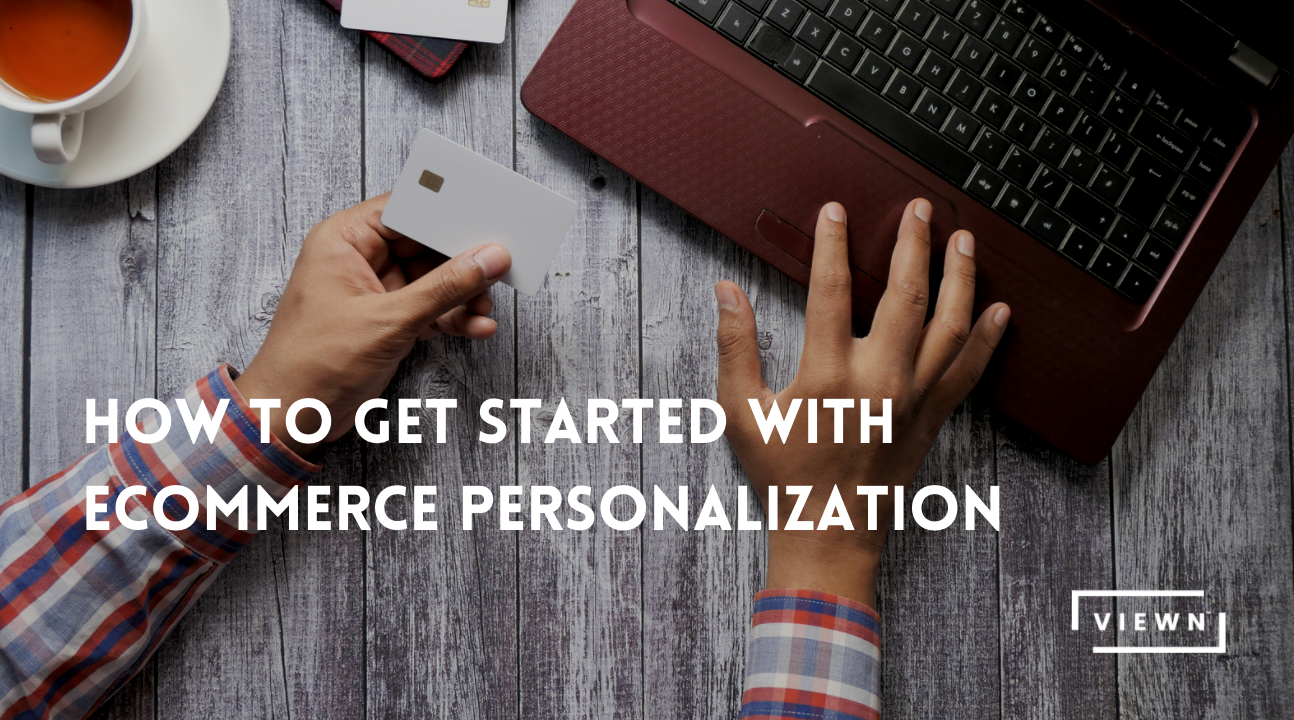Follow this process to design the ultimate customer experiences
eCommerce Personalization is the process of delivering personal experiences on eCommerce sites by dynamically showing content, product recommendations, and specific offers based upon previous actions. Marketers can use browsing behavior to track data from various sources such as demographics or purchase history to offer a more individualized experience that will likely increase conversion rates for your company’s online store.

Personalization is increasingly important to merchants who are looking for ways on how they can both engage shoppers and increase repeat purchases. You can execute many ways, from personalized product recommendations sent via SMS, dynamic promotions on product pages to cart-abandonment marketing emails that are designed for increased conversion rates.
Optimized customer journeys allow brands to provide relevant content at every process stage while improving overall satisfaction levels through creativity and innovation. Personalizing your company’s online experience has become more important than ever before as people turn away from traditional media consumption habits largely because it is increasingly cost-prohibitive. These changes have created new opportunities where marketers can be innovative by using tactics such as responsive web design. Hence, consumers receive tailored information based upon what device they’re viewing content.
According to Forrester, 77% of consumers have chosen, recommended, or paid more for a brand that provides a personalized service or experience.
Choosing where to get started with personalization
The customer interacts with your business with your brand in many ways, so there are many opportunities for personalization. So how do you get started? For each personalization initiative, the goal should be for the customer to complete the desired outcome. Whether your business goal is retention, cross-sell or upsell, you need to also focus on your customer’s goal when it comes to personalization.
Personalization connects with customers on an individual level, so you need insights because there are so many offerings that can be optimized. So consider the interactions within your eCommerce store like site searches, product recommendations, landing pages, email opens, discount codes used, subscription sign-ups. It looks beyond who you are and focuses on what they want from the business at this very moment, which makes for more engaging customer experiences both online as well as off.
Design the customer experience
Below is a simplified process for identifying your personalization initiative. Of course, each step in the process has its own complexities and pitfalls. Keep in mind that information technology projects are hard but very rewarding when successfully executed. Breaking your design process into steps will help you keep a tab on where to go.
1. Set your business goal
2. Understand what customers need to do to meet this business goal
3. Consider the channels and touchpoints your customers use
4. Map out the customer journey to identify where personalization would help most.
5. Identify the content and tools you need to deliver the customer experience
6. Note the gaps in the data you need.
7. Find where to get this data or adapt your journey to collect the information, so you have it when you need it.
8. Configure tools and load content so that it works at scale
9. Measure and iterate improvements
Technology and tactical practicalities
When discussing personalization in digital business, it is important to recognize that no single tactic defines this. For example, one might be limited by the type of technology they use. At the same time, another may affect how personalized your customer experience with them can become or what data you need the customer to give up.
In addition to email and SMS automation, marketing automation for landing pages and content, a customer data platform (CDP) can connect to your transactions and these other technologies to give you the rich customer data you need for customer insights and digital experience orchestration.
For example, a common marketing technology stack eCommerce Stores includes Facebook Ads, Shopify, Mailchimp for email nurturing, Google Analytics, Facebook Messenger. Adding any Amazon data, you can get too. If you can put customer data at the center of your demand generation activity and let it drive the decision-making and tactics, then a CDP becomes a central component of your engine.
Core characteristics of a CDP:
1. Pull data from multiple sources
2. Clean and combine data into individual profiles,
3. Structure data for other marketing systems to use.
In looking at what Shopify store owners have been doing and handling, these marketing teams can easily use a dozen applications. I bet your list of applications is pretty long. Customers expecting more and using more devices, the channels, and means to grow demand often drives the investment in so many marketing solutions. Everyone requires the right combination of technologies to deliver the best customer experience these days.
Real-time personalization is about noticing how a visitor’s behavior differs or aligns with their typical behaviors, identifying the current goal through observational data analysis that includes those who behave similarly as well as users themselves if available for one’s own eCommerce store. This feature of a CDP allows your business to provide customer-tailored experiences according to what they’re interested in at any given moment, which can lead them closer to fulfilling the business goal. The complex logic needed from CDPs often involves machine learning or artificial intelligence.



